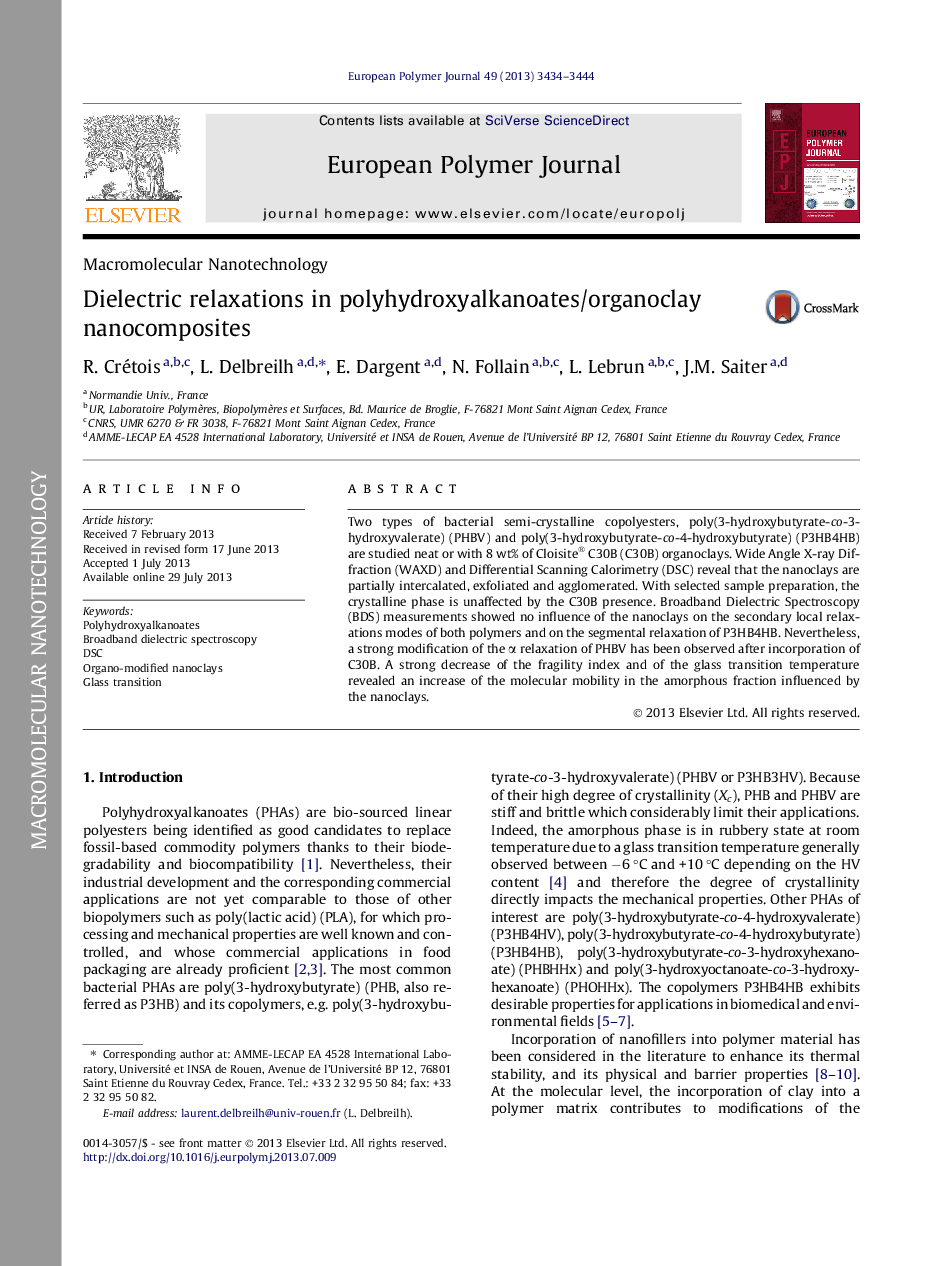| Article ID | Journal | Published Year | Pages | File Type |
|---|---|---|---|---|
| 1399607 | European Polymer Journal | 2013 | 11 Pages |
•The effect of organoclay in the amorphous and crystalline phases of PHBV and P3HB4HB is studied.•Two β relaxation processes have been identified for P3HB4HB, one for 3HB and another for 4HB group.•PHBV and P3HB4HB α relaxations present similar frequency dependences and fragility indexes.
Two types of bacterial semi-crystalline copolyesters, poly(3-hydroxybutyrate-co-3-hydroxyvalerate) (PHBV) and poly(3-hydroxybutyrate-co-4-hydroxybutyrate) (P3HB4HB) are studied neat or with 8 wt% of Cloisite® C30B (C30B) organoclays. Wide Angle X-ray Diffraction (WAXD) and Differential Scanning Calorimetry (DSC) reveal that the nanoclays are partially intercalated, exfoliated and agglomerated. With selected sample preparation, the crystalline phase is unaffected by the C30B presence. Broadband Dielectric Spectroscopy (BDS) measurements showed no influence of the nanoclays on the secondary local relaxations modes of both polymers and on the segmental relaxation of P3HB4HB. Nevertheless, a strong modification of the α relaxation of PHBV has been observed after incorporation of C30B. A strong decrease of the fragility index and of the glass transition temperature revealed an increase of the molecular mobility in the amorphous fraction influenced by the nanoclays.
Graphical abstractFigure optionsDownload full-size imageDownload as PowerPoint slide
